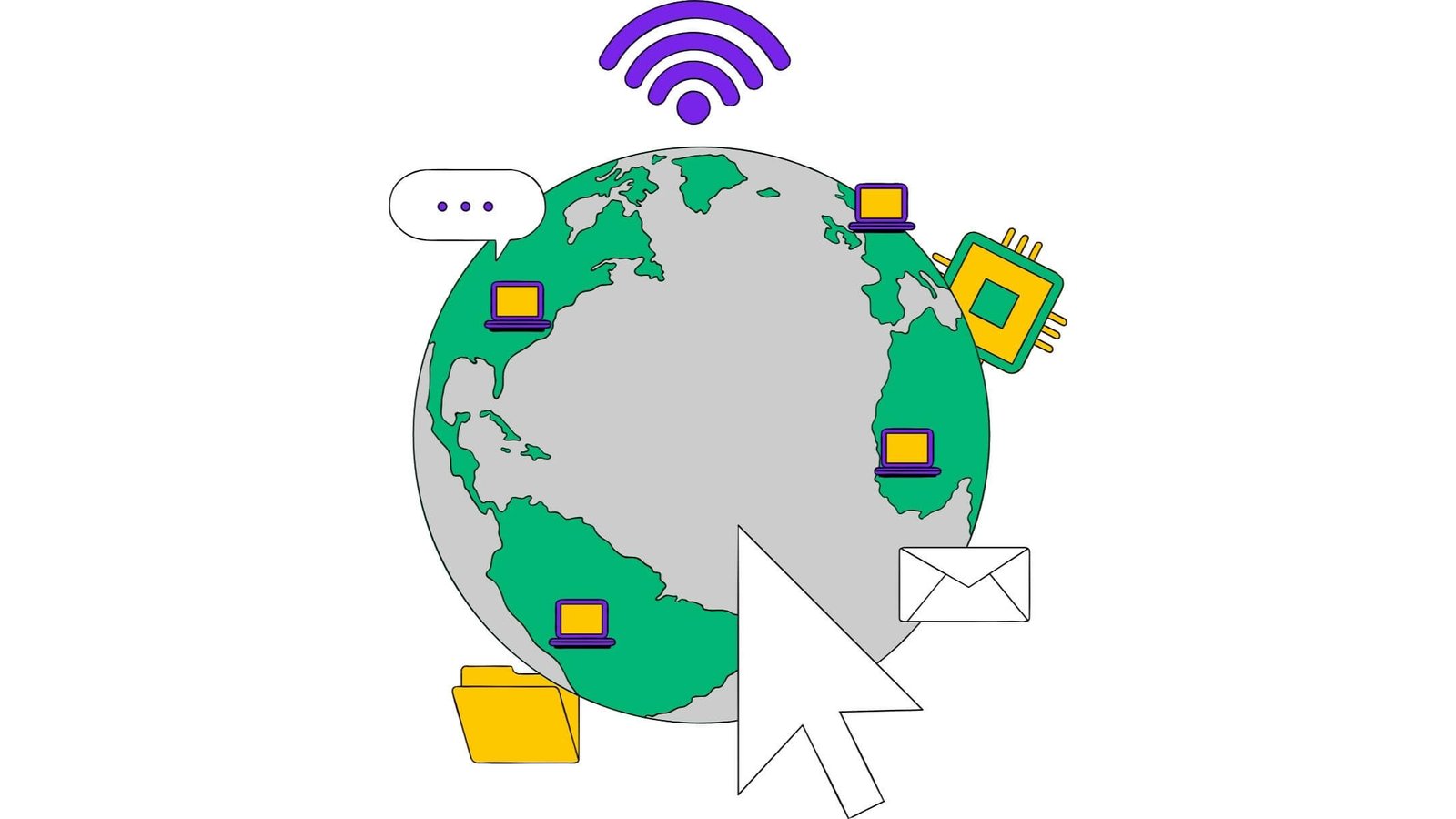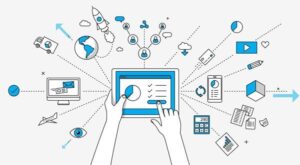🌐 HISTORY OF THE INTERNET – FULL EXPLANATION
🧪 1. 1960s: The Birth of the Idea
- Origin: The idea of networking multiple computers began in the Cold War era.
- 1969 – ARPANET:
Developed by the U.S. Advanced Research Projects Agency (ARPA). It was the first working prototype of the Internet.- Connected 4 universities: UCLA, Stanford, UC Santa Barbara, University of Utah.
- Used packet switching, a method still used today.
💌 2. 1970s: Protocols and Email
- 1971 – Email Invented:
Ray Tomlinson created the first email system using the “@” symbol. - 1973 – TCP/IP Introduced:
Vint Cerf and Bob Kahn developed TCP/IP, the core communication protocol that allows networks to connect. - 1978 – First Spam Email:
A marketing message sent over ARPANET marked the beginning of spam.

🌍 3. 1980s: Growing the Network
- 1983 – ARPANET switches to TCP/IP:
This marks the official start of the Internet. - 1984 – DNS (Domain Name System):
Replaced numerical IP addresses with domain names like.com,.org,.edu. - Networks like Usenet, BITNET, and NSFNET helped the academic community expand online.
🕸️ 4. 1990s: The World Wide Web & Public Access
- 1990 – WWW (World Wide Web):
Invented by Tim Berners-Lee; included key components:- HTML: language for creating pages
- HTTP: protocol for transferring web pages
- URL: addressing system
- 1993 – Mosaic Browser:
First user-friendly web browser; later became Netscape. - 1995 – Internet Becomes Commercial:
Launch of Amazon, Yahoo, eBay. - Search engines, online chats, and forums flourished.
📱 5. 2000s: Broadband and Social Media
- High-Speed Internet (Broadband):
Replaced slow dial-up. - Search Engines:
Google becomes dominant. - Social Media Revolution:
Facebook (2004), YouTube (2005), Twitter (2006) - Rise of e-commerce and digital marketing.
📡 6. 2010s: Mobile, Cloud & AI
- Mobile Internet:
Widespread use of smartphones, 4G/5G. - Cloud Computing:
AWS, Azure, Google Cloud allow data storage and access online. - Streaming & Apps:
YouTube, Netflix, Instagram, TikTok change digital culture. - Cybersecurity, AI, Blockchain, IoT gain importance.
🔮 7. 2020s and Beyond: Smart, Connected World
- AI Integration:
Chatbots, automation, and intelligent search. - Edge Computing, Metaverse, Web3:
New frontiers in computing. - Cybersecurity Challenges:
With more users and connected devices, threats rise rapidly. - The Internet is now essential infrastructure for education, work, communication, and more.



